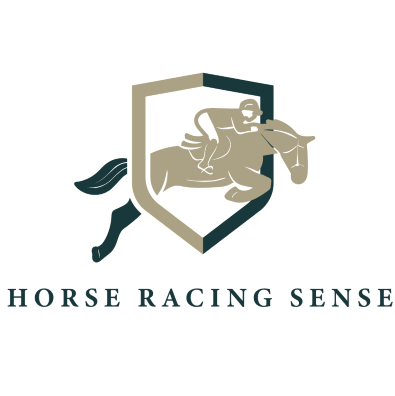Last updated: January 12, 2024
Did you know that the color of thoroughbred horses goes deeper than its coat? It’s a unique combination of genetics, history, and practical considerations. As someone deeply involved in horse racing and breeding, I’ve come to understand the importance of thoroughbred colors. These colors aren’t just for show; they play a key role in racing, breeding, and registration.
In this article, we’ll dive into the colorful world of thoroughbreds. From the common bays and chestnuts to the rarer shades like palomino and roan, thoroughbred horses exhibit a remarkable range of colors. Knowing these colors is crucial, not just for registration purposes but also for appreciating the breed’s heritage and biology.
Let’s delve into the significance of thoroughbred colors, where each color reflects a part of the horse’s lineage and genetic makeup. Whether you’re a horse enthusiast or just starting to learn about equines, this guide will enhance your knowledge and appreciation of these remarkable animals.
The Spectrum of Thoroughbred Colors
Thoroughbred horses showcase a range of colors, each with its own unique genetic background and significance in the breed’s registration. Let’s explore these recognized colors, from the most common to the rarest.
Bay
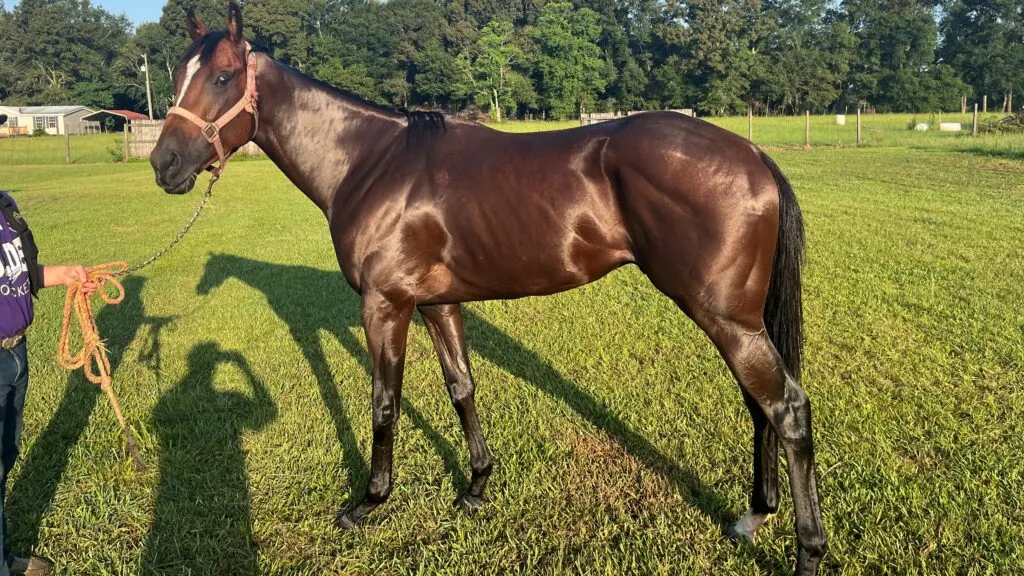
A prevalent color, bay thoroughbreds have a reddish-brown body with black points – mane, tail, and lower legs. They can vary from light to dark shades.
Dark Bay/Brown
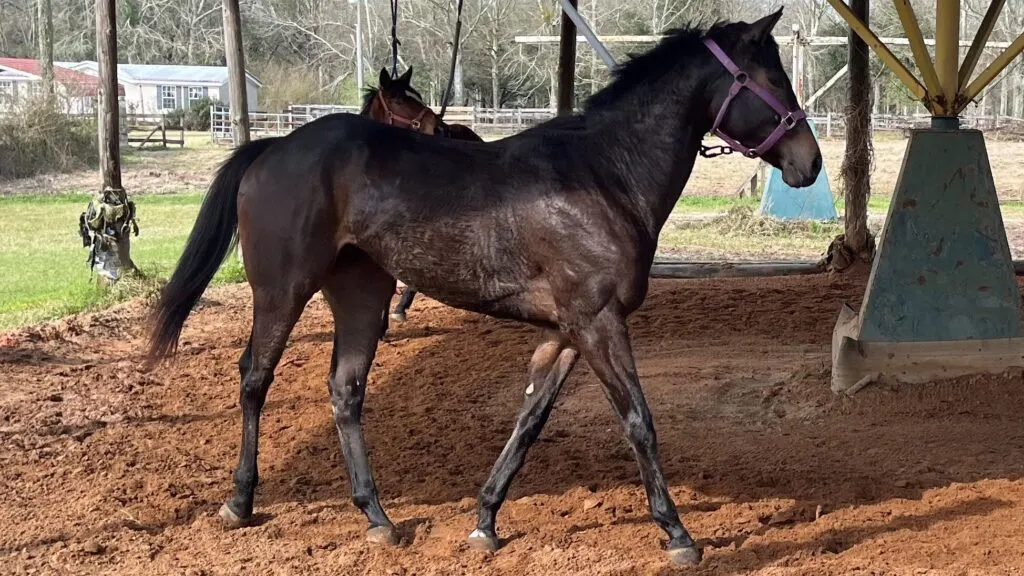
Similar to bay but with a darker, almost black hue. These horses often have a rich, deep brown coat.
Chestnut
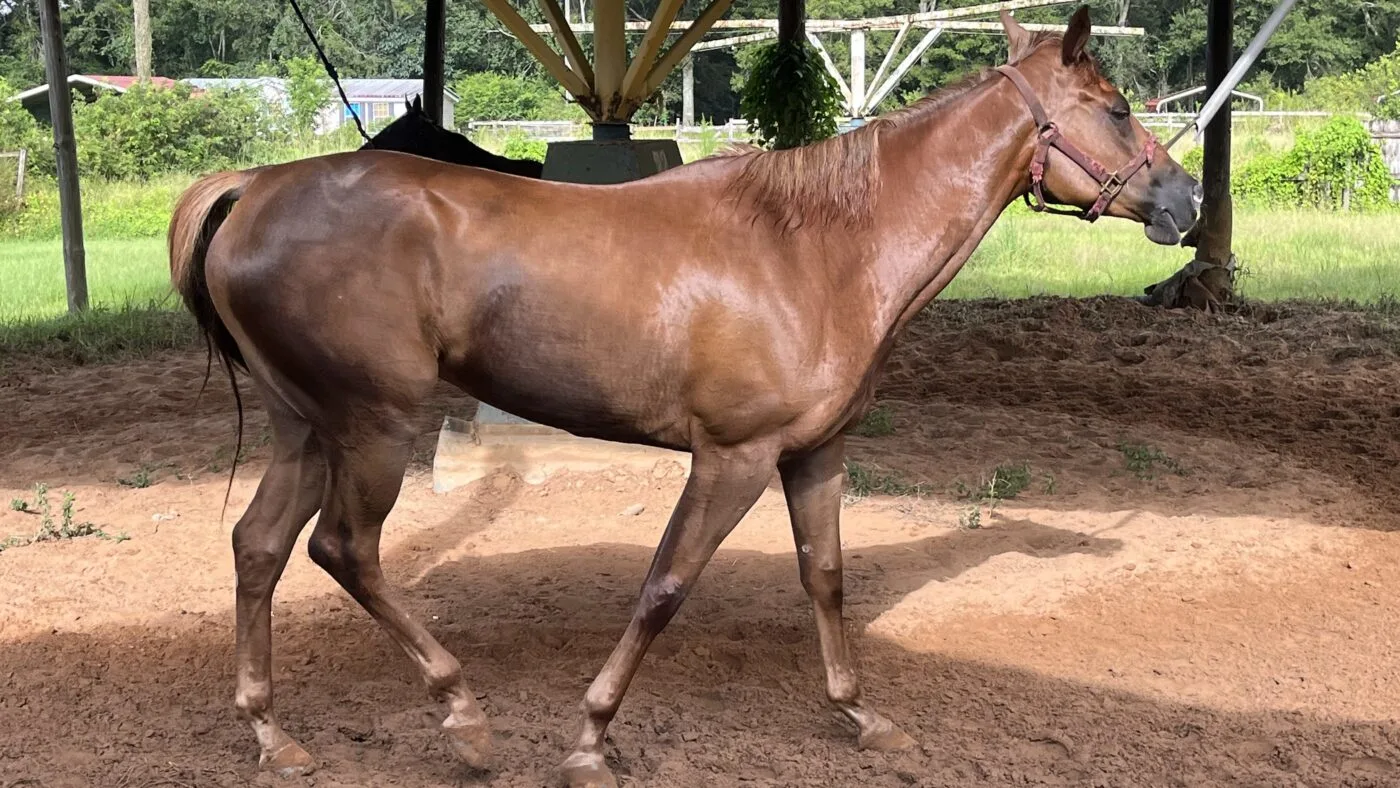
This color ranges from a light, golden hue to a deep, reddish-brown. Chestnuts have a uniform color across their body, mane, and tail.
Black
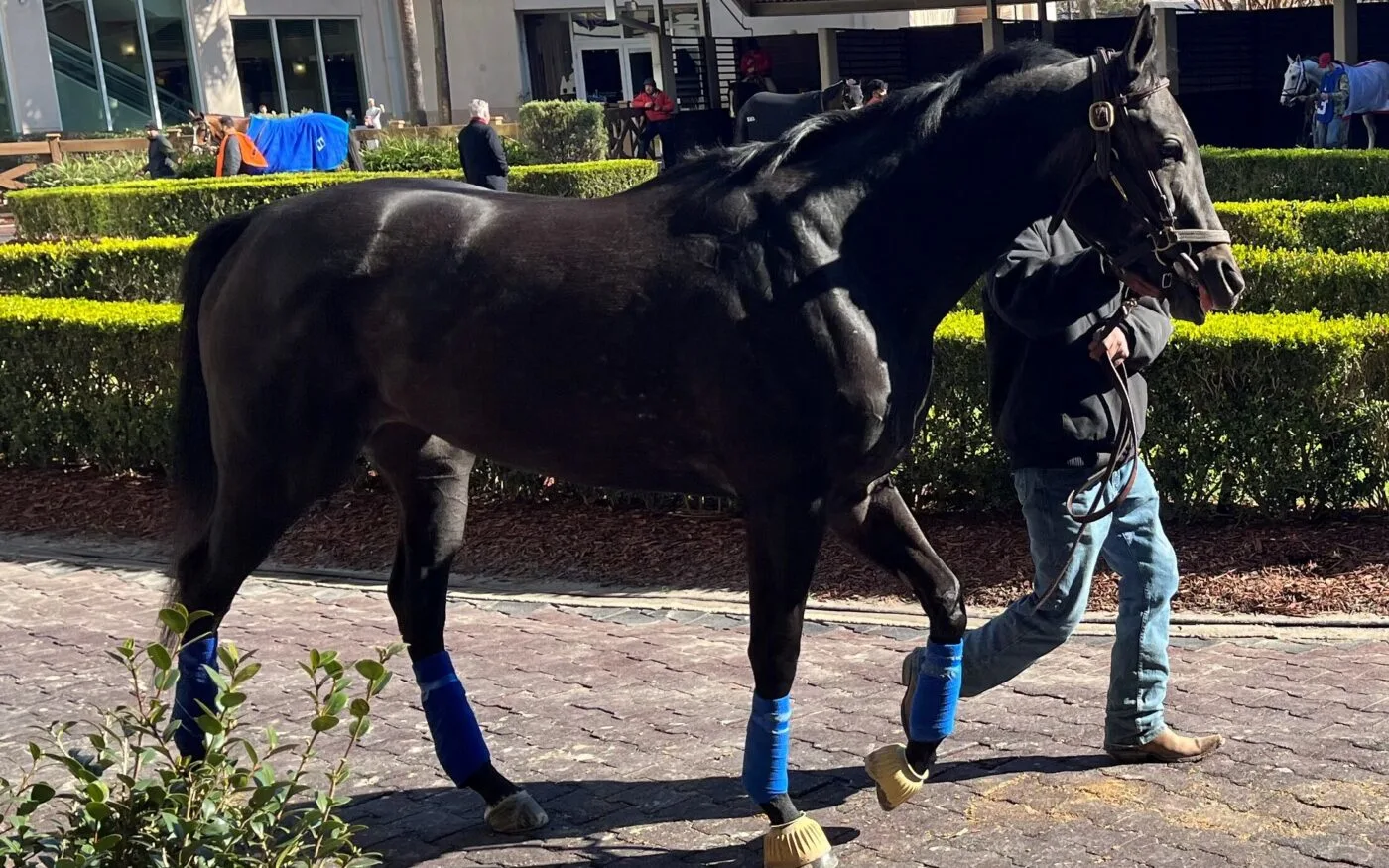
A rare and striking color, true black thoroughbreds have a completely black coat without any brown hairs.
Grey
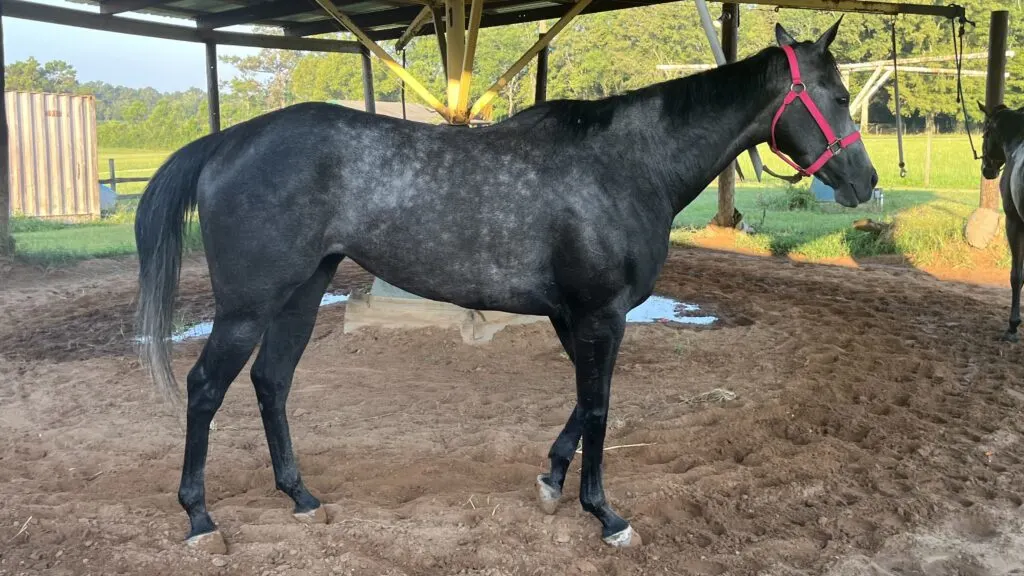
These horses start with a darker coat that lightens as they age, leading to shades ranging from dapple grey to almost white.
Rare and Unique Thoroughbred Colors
Roan

- :
- Image: A rare white thoroughbred.
Palomino
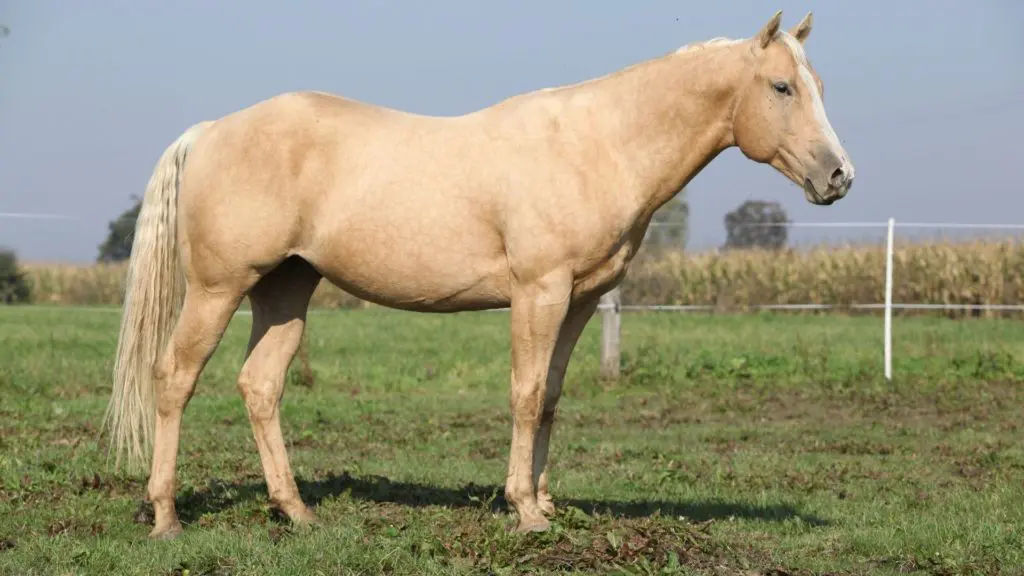
Known for their striking golden coat and flaxen mane and tail, palomino is a rare but recognized color in thoroughbreds.
White

Extremely rare, white thoroughbreds have a pure white coat and are distinct from greys. This color is recognized as separate and unique.
The spectrum of colors in thoroughbreds, from the common bays and chestnuts to the rare whites and palominos, reflects the breed’s diverse genetic heritage. Each color, recognized by breed registries, contributes to the thoroughbred’s identity and allure.

Acceptable Markings on Thoroughbreds
In addition to coat colors, markings on thoroughbreds play a crucial role in their identification and registration. Understanding these markings is essential for breeders, racers, and enthusiasts alike.
- Types of Markings: Thoroughbreds can have various types of white markings, typically on their face and legs. These include stars, stripes, blazes on the face, and socks or stockings on the legs.
- Face Markings:
- Star: A small white patch on the forehead.
- Stripe: A narrow white line down the bridge of the nose.
- Blaze: A wider white stripe extending down the face.
- Leg Markings:
- Sock: White marking that covers the fetlock and part of the leg.
- Stocking: Extends higher up the leg, sometimes up to the knee or hock.
- Registration Criteria: When registering a thoroughbred, these markings are meticulously documented. They are as unique to each horse as fingerprints are to humans and are crucial for accurate identification.
- Genetic Influence: Like coat colors, markings are influenced by genetics. They are inherited traits and can sometimes help trace lineage and ancestry.
- No Impact on Performance: It’s important to note that these markings have no impact on a thoroughbred’s racing performance. They are purely aesthetic and serve primarily for identification purposes.
Understanding and documenting these markings are as important as recognizing coat colors in thoroughbreds. They add to the distinct identity of each horse and are a fascinating aspect of thoroughbred genetics and registration.

Genetics Behind the Colors
The coat colors of thoroughbred horses are a fascinating showcase of genetic influence. Here’s a simplified look at how genetics determine these colors:
- Genetic Basics: A horse’s coat color is governed by its genetic code, inherited from both parents. This code dictates the production of pigments in the horse’s skin and hair.
- Pigment Types: The two primary pigments are eumelanin (black) and pheomelanin (red). The interaction and dominance of these pigments create a variety of coat colors in thoroughbreds.
- Gene Interaction: Different genes can modify these pigments, leading to the spectrum of colors seen. For example, a gene responsible for black pigment can be suppressed by other genes, resulting in a chestnut coat.
Research and Expert Opinions
Studies in equine genetics have unraveled many mysteries behind these color patterns. Geneticists and equine experts continually contribute to our understanding of these complex genetic interactions.
Published research by the College of Animal Science in China reveals the complex genetics behind horse coat colors, emphasizing the role of human selection and its impact on breeding. Advances in genomics have linked specific colors to certain equine diseases, aiding in horse breeding and genetic research.
Citation: Zhao et al. (2018). Yi Chuan, 40(5), 357-368. DOI: 10.16288/j.yczz.17-371.
Color Inheritance Patterns
Understanding the inheritance patterns of coat colors involves looking at dominant and recessive genes:
- Dominant vs. Recessive Genes: A dominant gene overshadows its recessive counterpart. For a horse to display a recessive color, it must inherit the recessive gene from both parents.
- Basic Color Genes: The Extension (E) and Agouti (A) genes are crucial. The E gene controls the production of black and red pigments, while the A gene affects the distribution of these pigments.
- Bay: Results from a dominant E gene and at least one dominant A gene.
- Black: Occurs with a dominant E gene and two recessive a genes.
- Chestnut: Arises when the horse has two recessive e genes, regardless of the A gene.
Here is the diagram illustrating the genetic inheritance patterns for thoroughbred coat colors:
This diagram visually represents how the Extension (E/e) and Agouti (A/a) genes determine the colors Bay, Black, and Chestnut in thoroughbreds. The dominant and recessive states of these genes combine to produce the specific coat colors.
As you can see from the diagram, the genetics behind thoroughbred coat colors are a blend of dominant and recessive genes working together to produce the horse’s final color. These patterns are not just a matter of chance but a predictable outcome based on genetic principles.
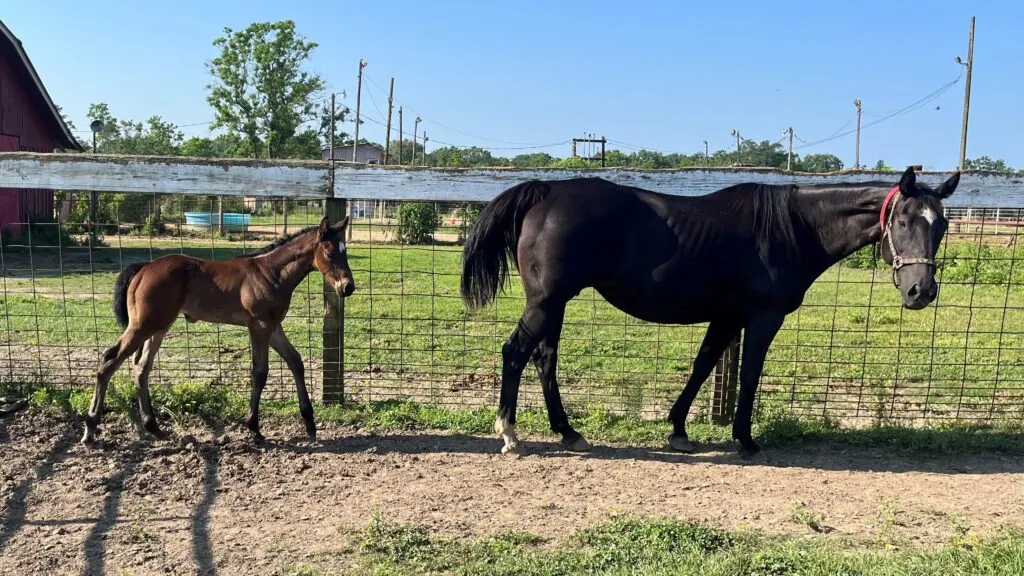
Colors and Thoroughbred Registration
The registration of thoroughbred horses involves specific color criteria, which are crucial for maintaining breed standards. Here’s an overview of these criteria:
- Recognized Colors: The Jockey Club, the principal authority in thoroughbred registration, recognizes specific coat colors for registration purposes. These include bay, dark bay or brown, chestnut, black, gray, roan, palomino, and the very rare white.
- Color Verification: During registration, the horse’s coat color is verified and recorded. This process is vital for accurate breed documentation and lineage tracking.
- Quote from The Jockey Club: “The Jockey Club maintains stringent standards for color registration to ensure the integrity and history of the thoroughbred breed are preserved.” – The Jockey Club
- Exclusion of Certain Patterns: It’s important to note that coat patterns involving more than one color, such as Pinto or Appaloosa, are not recognized for thoroughbred registration.
The Role of Color in Identification
Coat color and markings play a significant role in the identification of thoroughbred horses:
- Unique Identifiers: Just like fingerprints in humans, the color and markings of a horse are unique and help in distinguishing one animal from another.
- Lineage Tracking: Colors and markings are often used to trace lineage and ancestry, providing valuable information for breeders and enthusiasts.
- Registration Documentation: When a thoroughbred is registered, its color and any distinctive markings are meticulously recorded. This information becomes a crucial part of the horse’s official documentation.
- Importance in Racing: In the racing world, accurate identification ensures the integrity of the sport. Knowing a horse’s color and markings helps in verifying its identity during competitions.
The color of a thoroughbred is more than just an aesthetic attribute; it’s a critical factor in the registration process and plays an essential role in the horse’s identification and lineage tracking.
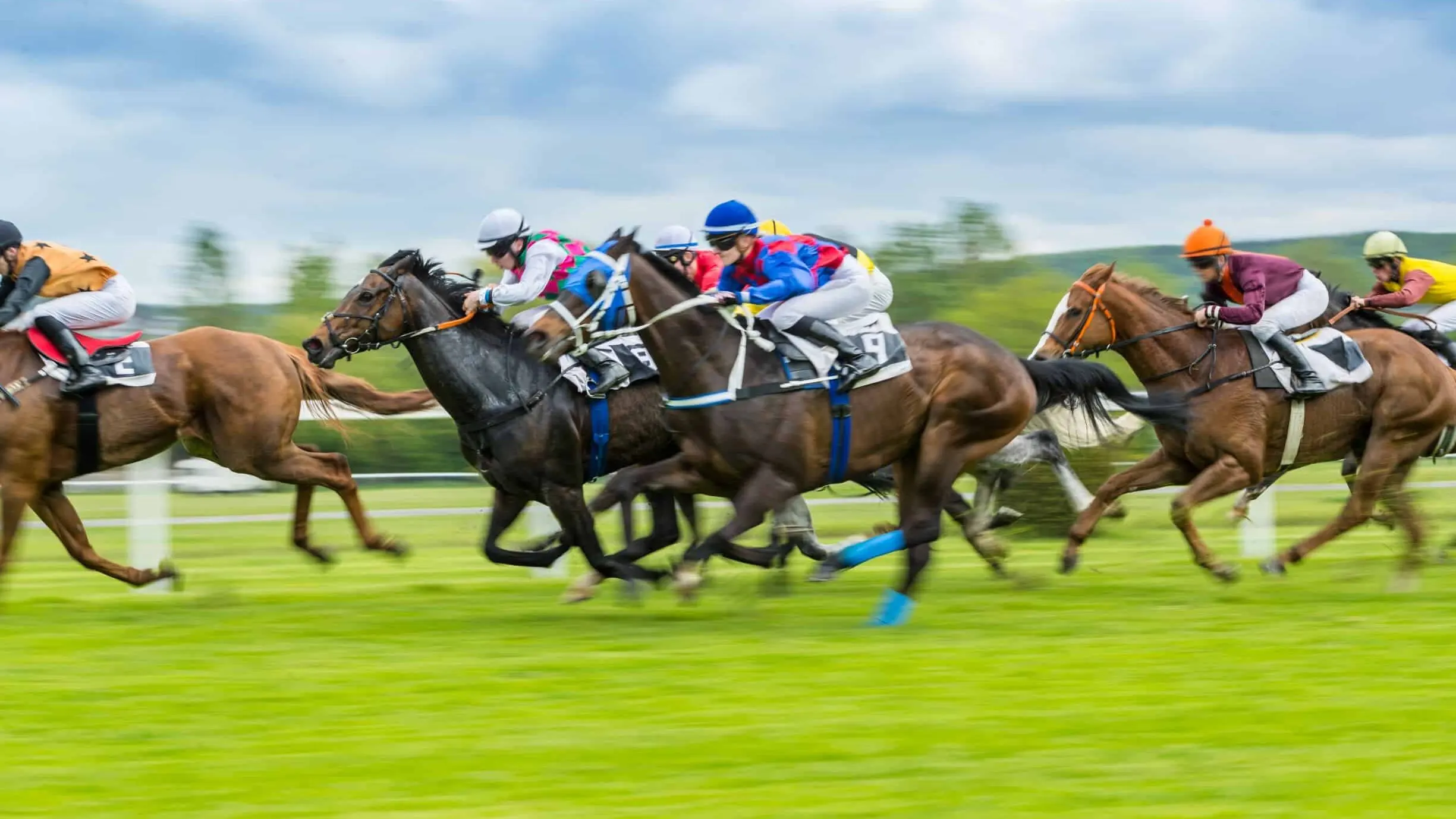
Color Influence in Racing and Breeding
Exploring the influence of coat color in the world of thoroughbred racing and breeding reveals a fascinating intersection of aesthetics, genetics, and market preferences. This section delves into how coat colors impact the racing success and breeding choices of Thoroughbreds.
Color Preferences in Racing
In thoroughbred racing, the question often arises: do certain coat colors correlate with racing success? While genetics play a crucial role in a horse’s performance, the coat color itself is not a direct factor. However, an analysis of race track legends reveals interesting trends in coat color prevalence among successful racehorses.
- Chestnut Thoroughbreds: The Triple Crown, the most prestigious title in horse racing, has been won by chestnut horses seven out of thirteen times since its inception in 1875. Notable chestnut champions include:
- Sir Barton (1919): The first horse to win the Triple Crown.
- Secretariat (1973): Known as “Big Red,” he’s often hailed as the greatest racehorse of all time.
- Justify (2018): A chestnut colt who won the Triple Crown without ever losing a race.
- Bay Thoroughbreds: Bay horses have also marked their success on the racetrack. Famous bay thoroughbreds include:
- Seabiscuit: A light bay who captured America’s heart in the late 1930s and triumphed over Triple Crown winner War Admiral.
- American Pharoah (2015): A bay who ended the 37-year Triple Crown drought.
- Gray/Roan Thoroughbreds: While less common, gray and roan horses have had their share of fame. For instance, Native Dancer, nicknamed “The Gray Ghost,” won 21 out of 22 starts and was inducted into the Hall of Fame.
Breeding Considerations
In the world of thoroughbred breeding, coat color can play a role in breeding decisions:
- Color Trends: Some breeders may prefer certain colors due to market demand or personal preference. For example, unique colors like palomino or roan might be sought after for their rarity.
- Genetic Considerations: Knowledgeable breeders pay attention to color genetics to avoid undesirable traits or to breed for specific colors. This is particularly important when breeding for rare colors, as it requires a careful selection of sire and dam.
- Breeder Preferences: Interviews with breeders reveal that while color is a consideration, it’s often secondary to factors like pedigree, conformation, and performance potential. However, some breeders specialize in producing horses of specific colors, catering to niche markets.
While coat color in thoroughbreds might not directly influence racing performance, it certainly plays a role in the racing industry and breeding choices. I notice that grays and horses with a lot of white seem to go higher at auctions than they should. Color preferences, whether due to aesthetics, market demand, or rarity, are an integral part of the thoroughbred world.
Below is a helpful YouTube video discussing the characteristics of Thoroughbred horses.
Myths and Misconceptions
The world of thoroughbred racing and breeding is rife with myths and misconceptions, particularly regarding coat colors. Let’s address and debunk some of these common myths:
Myth 1: Certain Colors Are Faster
- Reality: There is a widespread belief that certain coat colors, like black or dark bay, are inherently faster on the racetrack. However, scientific studies and racing statistics show no correlation between coat color and racing performance. Speed and agility in thoroughbreds are influenced by factors such as genetics, training, and physical condition, not by the color of their coat.
Myth 2: Color Determines Temperament
- Reality: Another common misconception is that a horse’s coat color can predict its temperament. For instance, chestnuts, especially mares, are often stereotyped as being more temperamental. In reality, temperament is a complex trait influenced by a variety of factors including genetics, environment, and handling, rather than coat color. Each horse is an individual, and its behavior cannot be generalized based on color.
Myth 3: Rare Colors Are More Valuable
- Reality: While rare colors like palomino or white might be visually striking, they don’t inherently increase a horse’s value in terms of performance or breeding potential. The value of a thoroughbred is more accurately assessed by its pedigree, conformation, and racing or breeding record. However, sometimes bidders do drive up the prices of horses with eye-catching coat colors and patterns.
Myth 4: White Horses Are Albinos
- Reality: White thoroughbreds are sometimes mistakenly identified as albinos. True albinism, characterized by a lack of pigment and often accompanied by vision problems, does not occur in horses. White thoroughbreds have normal pigmentation on their skin and eyes; their coat is simply devoid of color.
By debunking these myths, we can appreciate thoroughbreds for their true qualities and characteristics rather than misconceptions based on coat color.

Conclusion
In this exploration of thoroughbred colors, we’ve delved into the fascinating world of equine coat colors, their genetic underpinnings, and their significance in racing and breeding. Key points to remember include:
- Diverse Color Spectrum: Thoroughbreds exhibit a wide range of colors, from common shades like bay and chestnut to rarer hues like palomino and roan.
- Genetic Influence: Coat colors are determined by a complex interplay of genes, with the Extension and Agouti genes playing crucial roles.
- Registration and Identification: Recognized coat colors are important for thoroughbred registration, and they aid in the identification and lineage tracking of these majestic animals.
- Color Myths Debunked: Common myths about color influencing speed or temperament have been dispelled, emphasizing that each horse’s value and abilities are independent of its coat color.
The beauty and diversity of thoroughbred colors are a testament to the breed’s rich heritage. Each color not only adds to the visual appeal of these horses but also tells a story of their genetic lineage and breed history.
Additional Resources
For those eager to learn more about thoroughbred colors and genetics, here are some valuable resources:
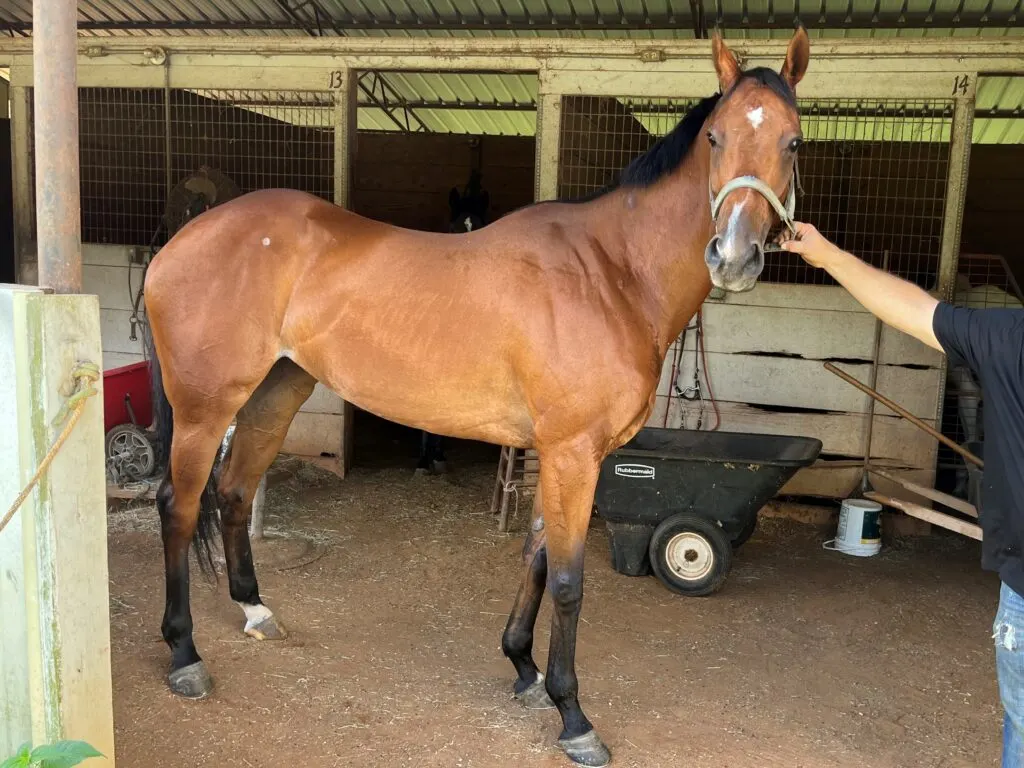
As we conclude our journey through the vibrant world of thoroughbred colors, I invite you to deepen your connection with these magnificent creatures. Whether you’re a seasoned equestrian, an aspiring breeder, or simply an admirer of their beauty, there’s always more to learn and explore.
Connect with Me
- Email: [email protected]
- Social Media: Follow me on Facebook for updates, tips, and insights into the world of horses.
- Website: Visit my website horseracingsense.com, for more articles, resources, and information about horses.
- YouTube
FAQs
What colors are officially recognized for Thoroughbred registration?
The American Jockey Club recognizes black, bay, chestnut, gray, roan, palomino, and white for Thoroughbred registration. Each color is important for identification and lineage tracking.
Can Thoroughbreds have white markings?
Yes, Thoroughbreds can have white markings. These markings are documented for accurate identification and registration purposes.
Does a Thoroughbred’s color affect its racing performance?
No, a Thoroughbred’s color does not influence its racing performance. Performance is determined by genetics, training, and overall health, not coat color. However, some colors seem to win more races than others.
Meet Miles Henry
An avid equestrian and seasoned racehorse owner, Miles Henry brings his extensive experience to the equine world, proudly associating with the AQHA, The Jockey Club, and various other equine organizations. Beyond the racetrack, Miles is an accomplished author, having published various books about horses, and is a recognized authority in the field, with his work cited in multiple publications.
🔗 Connect with Miles:
Twitter
Facebook
YouTube: Check out race highlights, horse care tips, and more!
